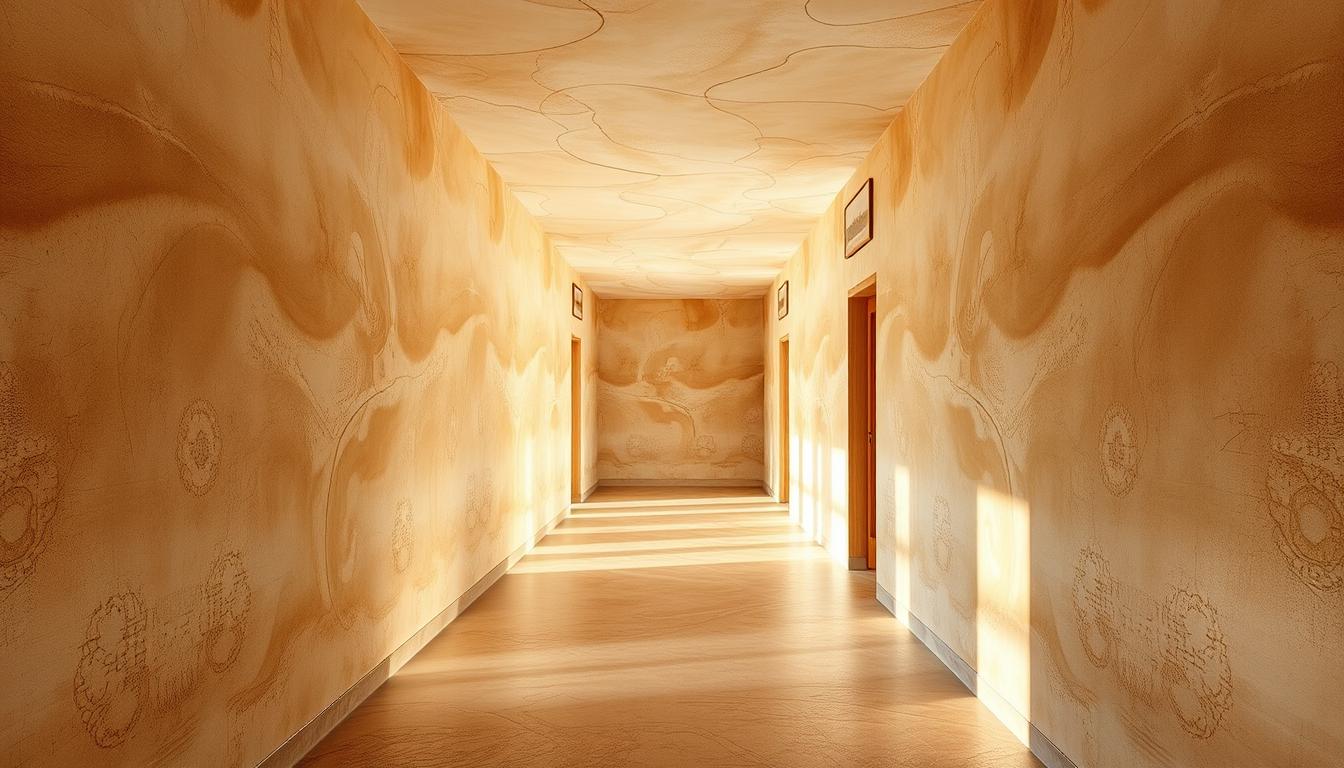Decorative plaster in the corridor is a wonderful way to make the interior more elegant and individual. It allows you to create a unique design that reflects your personality. Designer plaster can create various textures, colors, and patterns.
This adds depth and interest to the interior. Decorative plaster is very easy to apply to the wall. This speaks to its ease of use.
When choosing materials for finishing, it is better to opt for practical options. This confirms the importance of functionality. Interior plaster can be applied even without special skills.
Decorative plaster can make a small corridor feel larger. The choice of colors and textures has a significant impact on the atmosphere in the home. It creates a calm home environment.
Key Points
- Decorative plaster in the corridor is a great way to add elegance and individuality to the interior.
- Interior plaster allows you to create a unique design that reflects the personality of the homeowner.
- Designer plaster allows for various textures, colors, and patterns that add depth and visual interest to the interior.
- Decorative plaster in the corridor can be applied even without professional skills.
- The choice of colors and textures of decorative plaster allows for the creation of a calm home atmosphere.
What is decorative plaster and its advantages
Decorative plaster is a special type of plaster for creating decorative surfaces. It can create various textures, colors, and patterns. This adds depth and visual interest to the interior.
Decorative plaster, especially interior plaster, has many advantages. It can create a unique design that reflects the personality of the homeowner.
One of the main advantages of decorative plaster is its ability to create unique designs. It is suitable for various rooms, such as bedrooms, kitchens, children’s rooms, and living rooms. Additionally, it has notable thermal insulation qualities, making it popular in “wet” areas.
Decorative plaster can be applied to any surfaces after proper preparation. It is more resistant to mechanical impacts than paint. This improves acoustic comfort and provides better thermal insulation.
Decorative plaster, especially designer plaster, allows for the creation of multilayer textures and complex patterns on walls. This makes it popular among designers and homeowners.
Choosing materials for decorative plaster
Decorative plaster is ideal for finishing corridors. It is damage-resistant, easy to maintain, and hides imperfections. The variety of materials allows for the creation of unique designs.
You can use different materials, such as Venetian or designer plaster. It is important to choose quality materials that meet the project’s requirements. Such materials ensure long-lasting use and resistance to external influences.
When choosing materials for decorative plaster, it is important to pay attention to color, texture, and damage resistance. For example, decorative plaster with a sheen can create a glowing effect. And fine-grained mineral plaster is better suited for areas with high humidity.
For visual representation of different types of decorative plaster, the following examples can be used:
- Venetian plaster
- Designer plaster
- Interior plaster
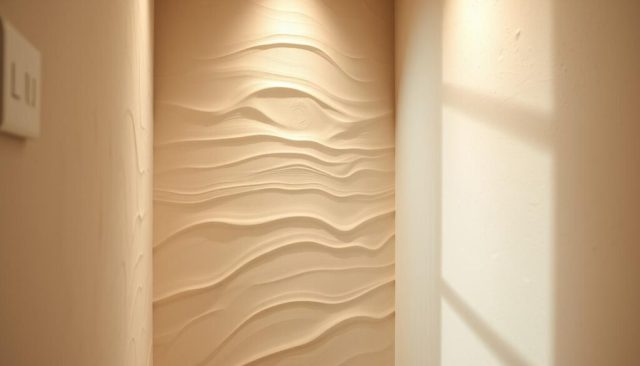
Renovation using plaster can be done independently. But for the best results, it is better to consult professionals. Decorative plaster is a modern material for creating unique interiors.
Preparing the corridor for plaster application
Preparing the corridor for plaster application is very important. It helps create beautiful walls. It is essential to assess the condition of the walls, prepare tools, and materials.
Before starting, you need to assess the condition of the walls. Then prepare the necessary tools and materials. For example, cleaning tools, primer, and plaster.
- tools for cleaning the surface
- materials for priming
- interior plaster
Preparation includes cleaning, applying primer, and other tasks. After that, plaster can be applied. Various materials and techniques are used.
Preparing the corridor for plaster application is very important. It ensures the durability and resistance of the plaster. Proper preparation creates beautiful and long-lasting walls.
Technique for applying decorative plaster
Decorative plaster is popular for finishing rooms, such as corridors. Applying it requires several steps. First, clean the surface of dirt and old paint.
Next, apply primer for better adhesion of the plaster. Special tools, such as trowels or floats, are used for the work. The plaster is applied in layers, drying each layer before the next.
This approach ensures the strength of the plaster. It is suitable for various surfaces, such as concrete, brick, wood, and drywall.
Before working with decorative plaster, you need to choose the type. There are many types, such as interior plaster. It is safe for children.
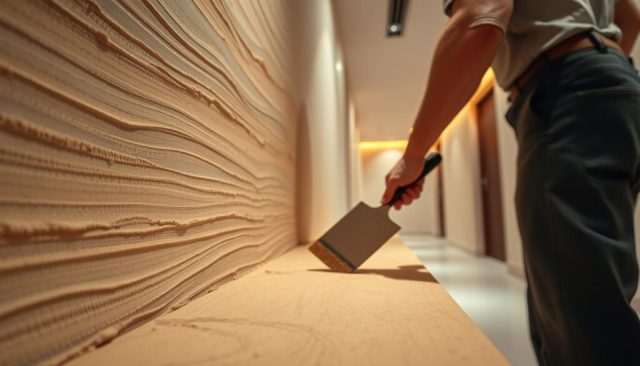
Decorative plaster is suitable for many surfaces, except glass and metal. The consumption depends on the type of surface and the grain of the plaster. For example, “bark beetle” consumes about 2.8 kg/m² at a grain of 2 mm.
The plaster is resistant to temperature fluctuations and moisture. It is safe for children. It can be used on various surfaces for room finishing.
Decorating the corridor with plaster
Decorating the corridor with plaster is a great way to make the interior more elegant and individual. Decorative plaster allows you to create a unique design that reflects your personality. The corridor is a high-traffic area, so it is important to use durable materials.
Interior plaster is resistant to wear and damage. Designer plaster combines colors and textures, creating stylish solutions. For example, Venetian plaster is perfect for classic interiors.
Decorative plaster lasts long, has breathability, and is resistant to mold. It is easy to maintain and hides wall imperfections. Popular types of decorative plaster include Travertine, Marseille wax, and Venetian plaster. Natural components like cement, marble, and limestone enhance durability.
Caring for decorative plaster
Caring for decorative plaster is very important. It helps prolong its lifespan. For example, wiping with a soft cloth, addressing minor damages, and using special cleaning products.
Decorative plaster requires special care. For cleaning, you can use a soft cloth with water or a special cleaner. Wiping with a dry or slightly damp cloth helps avoid dust accumulation.
To address minor damages, you can use special products. It is important to use cleaning products without aggressive chemicals. Regular care ensures long-lasting use.
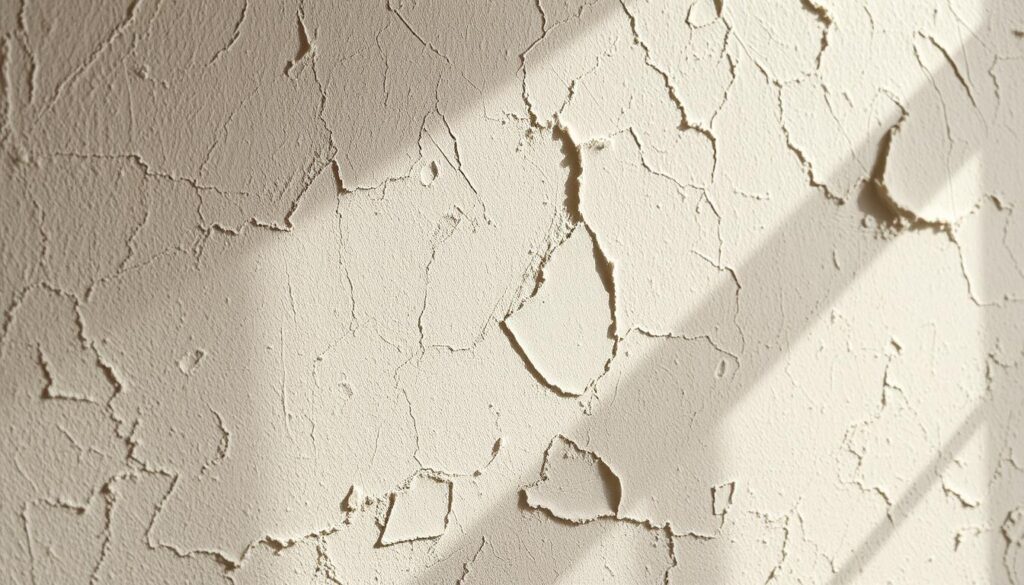
Venetian plaster requires waxing for protection. Thin-layer coatings do not require waxing; they are moisture-resistant. For cleaning, you can use a vacuum cleaner, a soft cloth, warm water, or a soapy solution.
Common mistakes when applying decorative plaster
Common mistakes occur when applying decorative plaster. They can worsen the result. For example, if the surface is not well prepared, the plaster will not adhere to the wall.
Another mistake is choosing the wrong materials. This can lead to the plaster lacking the necessary properties.
To avoid these mistakes, it is essential to prepare the surface well. This includes removing old materials and cleaning off contaminants. It is also important to choose the right materials based on the type of wall and moisture level.
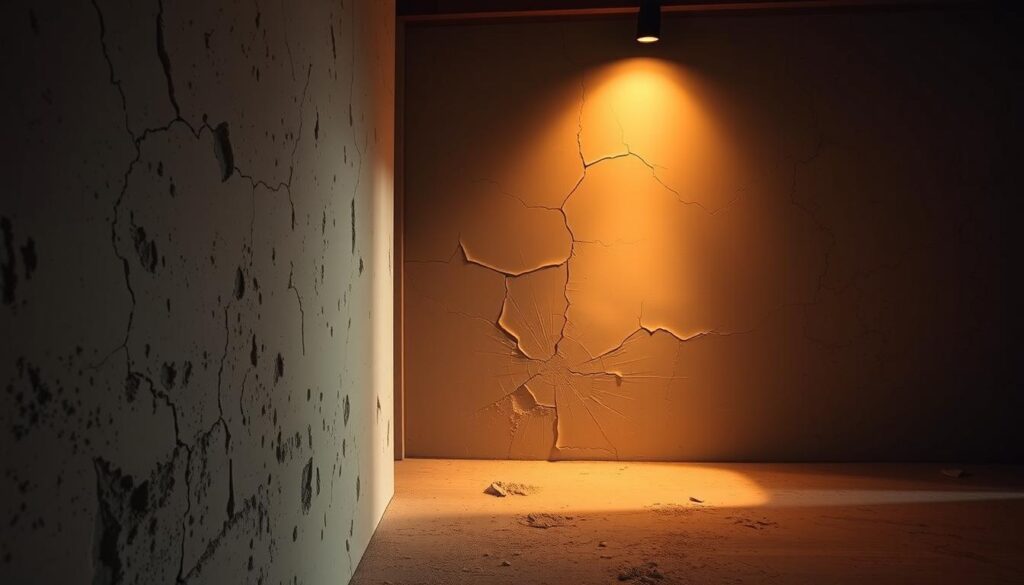
The most common mistakes when applying decorative plaster include:
- Poor surface preparation
- Incorrect choice of materials
- Avoiding professional help
To avoid these mistakes, it is better to consult professional craftsmen. They have experience working with decorative plaster. They will help choose materials, prepare the surface, and apply the plaster correctly.
Trends in the world of decorative plaster
Trends in the world of decorative plaster are constantly changing. It is important to be aware of popular styles and techniques. Innovative materials and design influences are also important.
Decorative plaster allows for the creation of unique designs. It reflects the personality of the homeowner.
One trend is interior plaster with high sensory tactility. This is achieved through uneven surfaces and barely noticeable relief patterns. The color palette includes shades of linen, sand, camel wool, cherry blossom, and chestnut.
Other popular options include:
- Mineral plaster: made from cement and lime, available as a dry mix.
- Acrylic plaster: ready to use, contains acrylic resins.
- Silicone plaster: the most expensive option, made from silicone resins.
Designer plaster provides high sensory tactility and a unique design. The choice of plaster depends on personal preferences and interior style.
Budgeting for a decorative plaster project
Budgeting for a project with decorative plaster is very important. It helps determine how much materials and services will cost. Decorative plaster for interiors can be quite expensive.
For accurate budgeting, several factors need to be considered. These include the cost of materials, labor costs, and the cost of additional services. The cost of materials depends on the type and quality of the plaster. Labor costs depend on the complexity of the project and the number of workers.
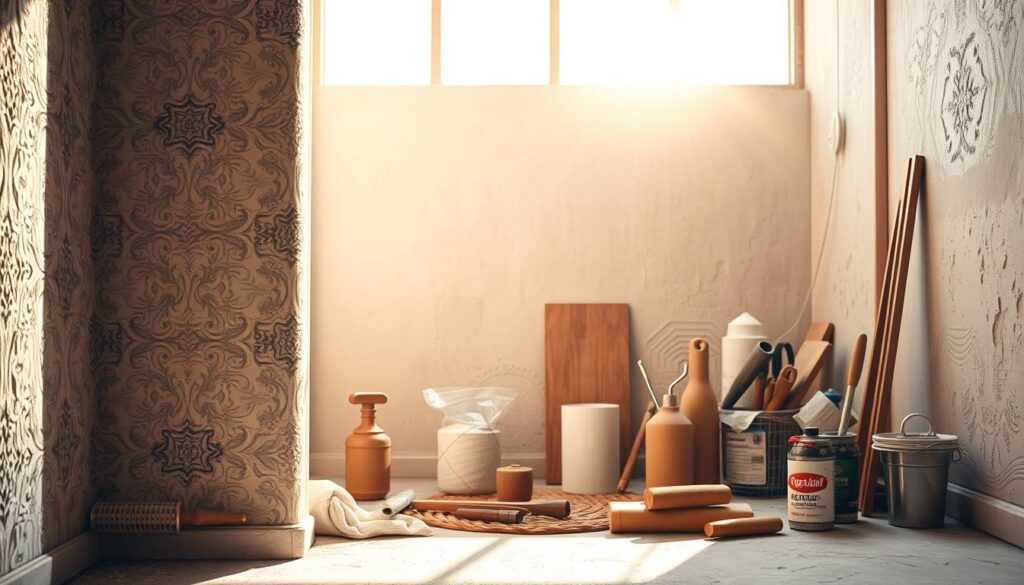
- Choosing materials with a lower price but not lower quality
- Applying decorative plaster yourself, if possible
- Choosing professional services at a lower price but not lower quality
Budgeting for a project with decorative plaster should take all factors into account. Proper budgeting will help successfully complete the project and meet the client’s requirements.
User reviews and experiences
Owner reviews of decorative plaster are very valuable. They help us better understand how it works. Readers can learn a lot from real experts.
Decorative plaster allows for the creation of unique interiors. It reflects the personality of the owner. With various textures and colors, the interior becomes not only beautiful but also cozy.
Owners say that decorative plaster is perfect for corridors. It looks attractive and is easy to maintain.
Experts emphasize that the right choice of materials is important. Adhering to the application technology ensures the long lifespan of the plaster. Therefore, before renovating the corridor, it is better to familiarize yourself with the experiences of others.
